Yesterday APRA published their quarterly ADI performance statistics to June 2014. So today we look at some of the detail contained in this mammoth release, with a focus on the four major banks, which makes up the bulk of the industry.
APRA reported that the net profit after tax for all ADIs was $8.4 billion for the quarter ending 30 June 2014. This is an increase of $0.1 billion (1.2 per cent) on the quarter ending 31 March 2014 and an increase of $0.2 billion (2.6 per cent) on the quarter ending 30 June 2013. The profit margin for all ADIs was 32.3 per cent for the year ending 30 June 2014, compared to 29.8 per cent for the year ending 30 June 2013. Impaired facilities were $19.9 billion as at 30 June 2014. This is a decrease of $1.8 billion (8.3 per cent) on 31 March 2014 and a decrease of $5.9 billion (22.9 per cent) on 30 June 2013. Whilst there are 161 entities within the data, a quick analysis of net profit shows that the big four have the lions share of profit after tax. So, we will focus our analysis on the majors.
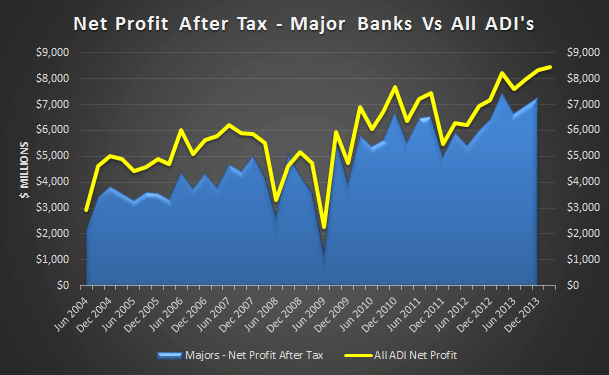 We note that for the majors loans and deposits continue to grow, and they are overall quite well aligned, though deposit growth is slowing slightly more recently.
We note that for the majors loans and deposits continue to grow, and they are overall quite well aligned, though deposit growth is slowing slightly more recently.
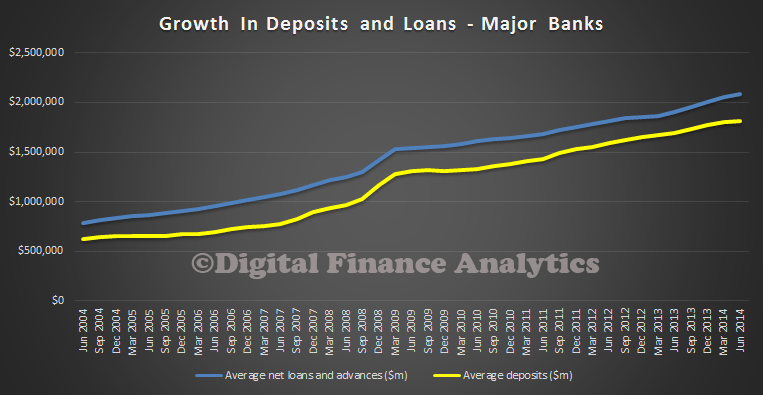 Looking at income sources for the majors, overall net interest income continues to rise, but the impact of lower rates, and discounting in the home loan market shows that gross interest income from the home loans has fallen from its peak in 2011. Bank margins are rising thanks to a change in funding, and lower international capital market rates.
Looking at income sources for the majors, overall net interest income continues to rise, but the impact of lower rates, and discounting in the home loan market shows that gross interest income from the home loans has fallen from its peak in 2011. Bank margins are rising thanks to a change in funding, and lower international capital market rates.
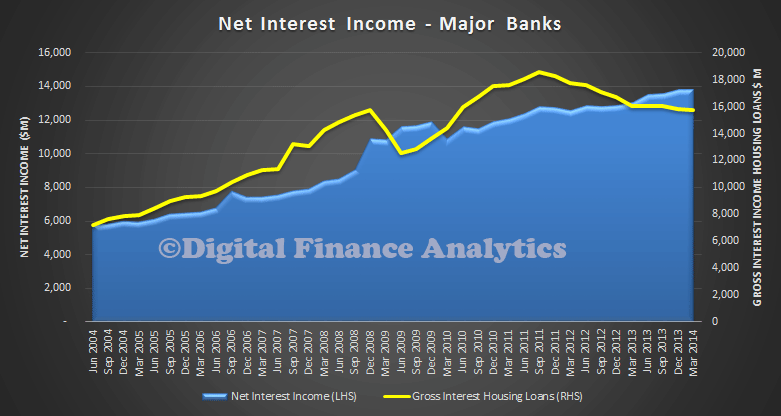 Looking at fee income, we see fees holding their own in value, but as a percentage of all income, fees are falling, standing at 20% of total income in the most recent quarter.
Looking at fee income, we see fees holding their own in value, but as a percentage of all income, fees are falling, standing at 20% of total income in the most recent quarter.
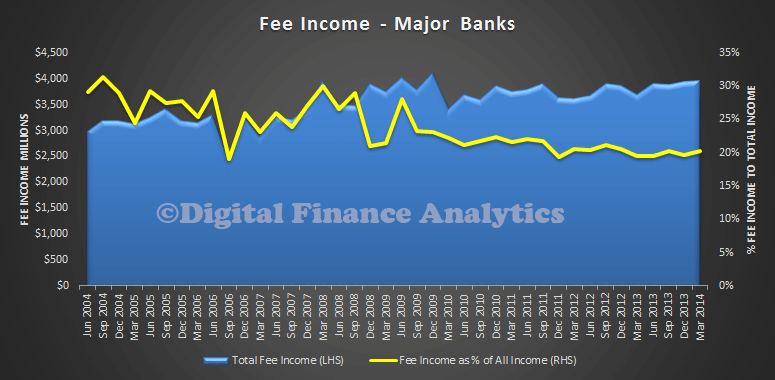 Lower interest rates have had an impact on the mix of deposits, with more money going into call deposits than term deposits. With rates so low, term deposits, and certificates of deposits are less attractive.
Lower interest rates have had an impact on the mix of deposits, with more money going into call deposits than term deposits. With rates so low, term deposits, and certificates of deposits are less attractive.
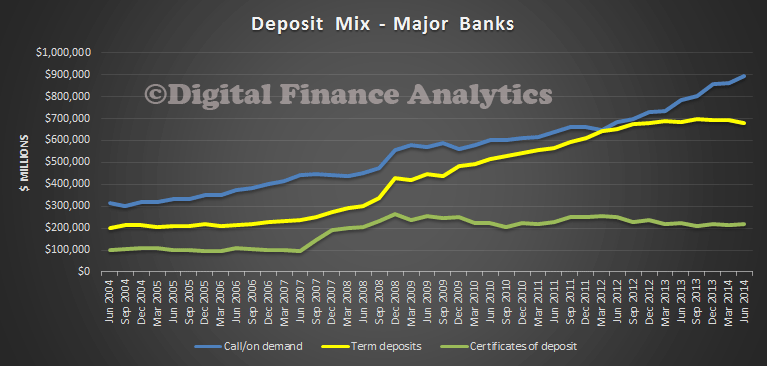 Looking at asset quality, the value of specific provisions have fallen again, as impaired facilities and past due payments have reduced. In fact the bulk of the profit growth can be traced to a reduction in the level of provisions!
Looking at asset quality, the value of specific provisions have fallen again, as impaired facilities and past due payments have reduced. In fact the bulk of the profit growth can be traced to a reduction in the level of provisions!
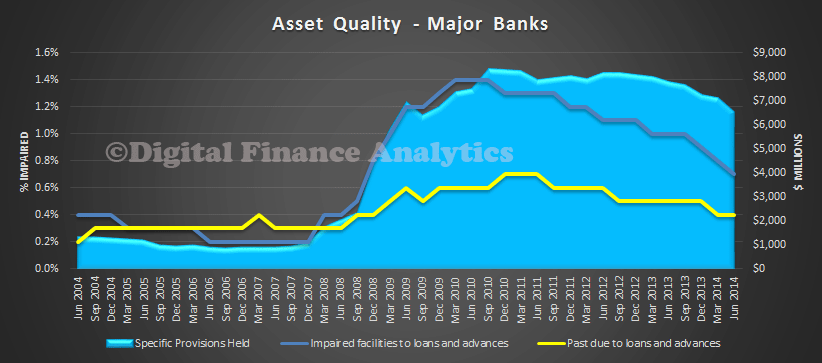 Capital ratios stand at 12%, the highest they have been, although these are relatively modest compared with some other countries. We commented on the capital ratio question recently.
Capital ratios stand at 12%, the highest they have been, although these are relatively modest compared with some other countries. We commented on the capital ratio question recently.
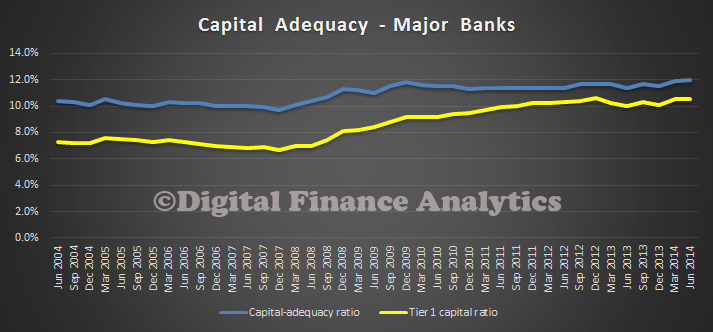 So, overall, the banks remain strong, but the big four which dominate the banking scene in Australia are relying largely on the release of provisions and improved margins to maintain profit growth and profit margins.
So, overall, the banks remain strong, but the big four which dominate the banking scene in Australia are relying largely on the release of provisions and improved margins to maintain profit growth and profit margins.

One thought on “Bank Profits Up To $8.4 Billion In June Quarter – APRA”